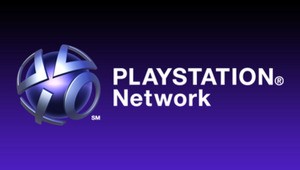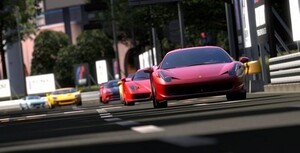
We’ll take any excuse to scoff copious amounts of cake here at Push Square towers, so naturally we were all on board to extend our celebrations for the PS3’s fifth anniversary.
Just a few days ago we shared our PlayStation 3 retrospective: part one, and now we’re back to continue our journey through time.
In this part we plot the launch of the PlayStation Move in 2010, as well as consider the consequences of the PlayStation Network hack attack in 2011. There’s even time to praise some of period’s best software, as well as take a fleeting glance into the future. So let’s get to it.
2010: Moving Forwards
On 1st March 2010 the PlayStation Network went offline for the first time. It was later revealed that it wasn't a problem with Sony’s network: due to a bug, the original non-slim PS3 hardware believed 2010 to be a leap year. For 24 hours the internet was awash with discussions about the “ApocalyPS3” (as it was dubbed), and it would become preparation for the altogether more severe events that occurred in 2011.

While 2010 may be remembered as the year of the motion controller, it was also the year Sony really started to dominate the competition in terms of first-party content. The first three months of the year saw the releases of MAG, Heavy Rain and God of War III.
Quantic Dream’s Heavy Rain would go on to become a huge point of discussion throughout the year, as it divided opinion with its narrative-based gameplay. Despite the scepticism of the industry, the title was a huge success for Sony and ended up becoming one of the biggest releases of the year.
With the motion sensing debate still hot on the lips of the industry in general, Sony used the 2010 Games Developers Conference to lift the lid on PlayStation Move. Prior to the announcement, rumours suggested that the device was to be called the PlayStation Arc, but legend reports that last minute changes – due to a Microsoft patent dispute – caused the platform holder to hastily rebrand the device. It’s still argued that the PlayStation Move’s logo resembles an “A” for “Arc” as opposed to an “M” for “Move”.

Sony used the GDC event to reveal a vast array of software for the peripheral. While clearly still in its infancy, titles ranged from Sports Champions to The Fight: Lights Out and Start The Party!. Sony was criticised for following in the footsteps of the Wii too closely, though it hinted at a hardcore focus with the announcement of SOCOM 4.
The PlayStation Move eventually released in mid-September in the West, and got off to a reasonable start. Despite criticisms regarding the software line-up – of which Sports Champions was easily the stand-out title – the technology prompted favourable reviews and by the end November, Sony claimed it had shipped 4.1 million units worldwide. The device was quickly outpaced by Kinect for Xbox 360 which enjoyed a much stronger marketing push, reportedly costing $500 million.
The emphasis on motion controls drew ire from large portions of the gaming public and media, but it was still a pleasant time for traditional releases. Red Dead Redemption scooped up many of 2010’s game of the year awards for its Western take on the Grand Theft Auto formula and impressive characterisation. The game scored an incredible 96 average on review aggregate website Metacritic, and went on to become one of the best selling games of the year.

2010 also brought the long-running Gran Turismo 5 saga to an end. Just about. Sony announced at E3 that the title was due to release on 2nd November in North America, but just weeks before its intended release the game was delayed until the altogether more vague “Holiday” release window. Sony said at the time that the delay was due to series creator Kazunori Yamauchi and developer Polyphony Digital wanting to make certain they were "creating the perfect racing experience”, but it later emerged that the game had missed its production window by three days. It’s still unclear why the game was late, but speculation at the time insinuated that Sony had wanted to release the game under the 3.50 software development kit to combat piracy, rather than the originally intended 3.41. The game eventually arrived on 24th November in Europe and North America, after numerous copies leaked out of production facilities around the world.
The controversy surrounding Gran Turismo 5’s release – and the wider narrative concerning piracy on the PS3 – became a big talking point by the end of 2010. Sony combated threats from the hacking community by removing the OtherOS feature – a move which went on to prompt greater fury from the gaming public and paved the way for the PSN outage drama in early 2011.



Comments 3
You're right, the hacking incident did wither into a half-forgotten memory quite quickly. Hard to believe that happened less than a year ago now.
Of course, the likely main reason that the PS3 has has a slow start of the year is that they've been buying promoting the Vita. Hard to split your focus between two platforms, after all, especially when one of them is brand-spanking-new. Now we just need more must-have games on the horizon for both machines...
Red Dead Redemption is awesome!!! That is all.
@Stuffgamer1 That's definitely true, yes, the Vita has taken up much of Sony's attention this year. I think it makes things more exciting though — we still really don't know what 2012 holds!
Show Comments
Leave A Comment
Hold on there, you need to login to post a comment...